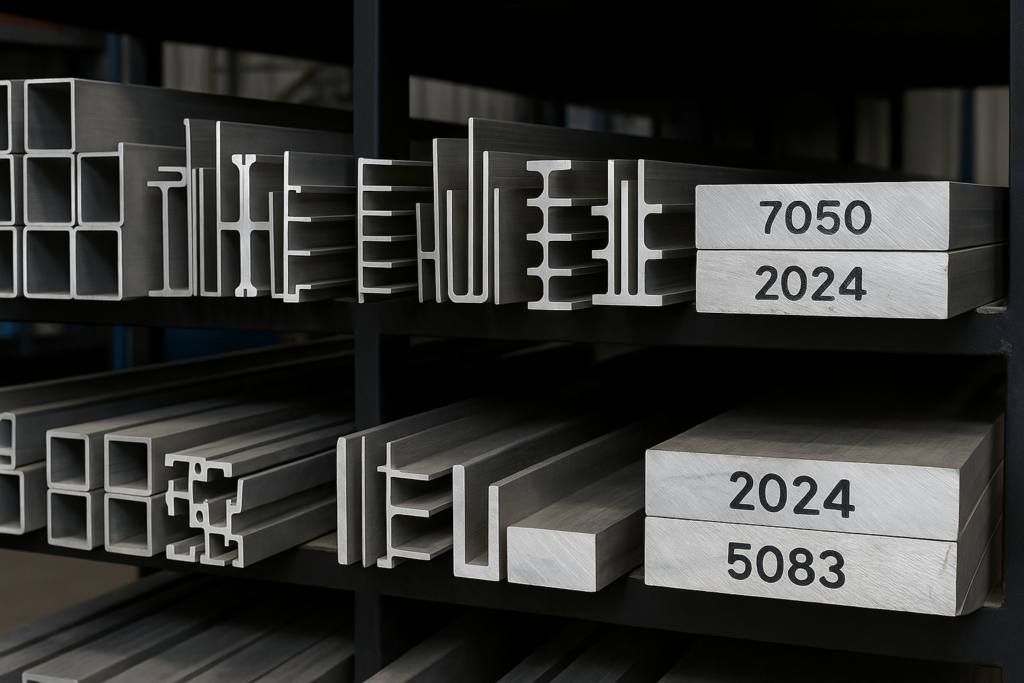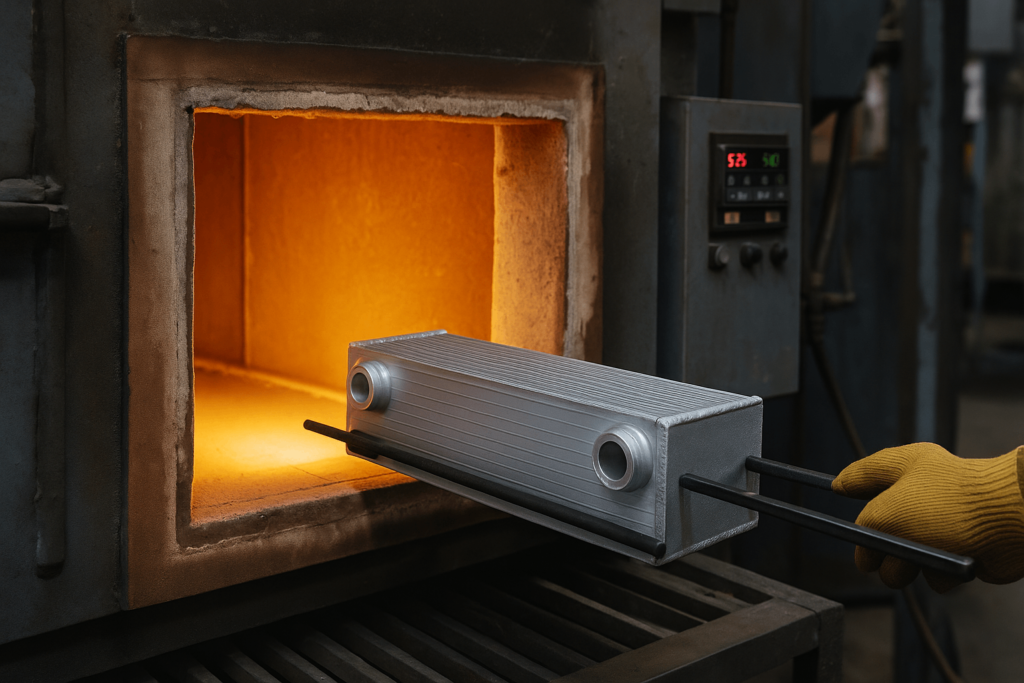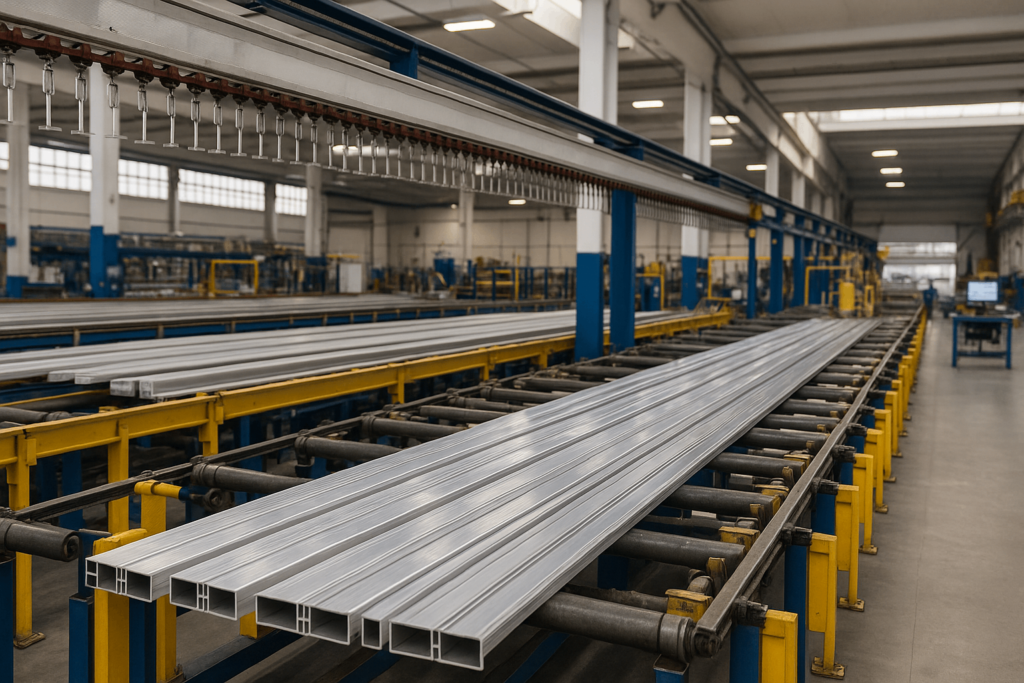Why It’s More Than a Metal Thing
You’ve placed a six-month order for 8,000 aluminum brackets. Everything checks out—until half the parts warp during CNC finishing. Production slows. Costs rise. You’re suddenly dealing with a supply chain delay you didn’t see coming.
That’s why heat treatment isn’t just a technical side note—it’s a core part of reliable production. In this article, we’ll explore what heat treatment improves, how it affects procurement decisions, and what to look for when evaluating aluminum suppliers.
Heat Treatment 101 — A Practical Overview for Buyers
Heat treatment alters aluminum’s internal structure to improve strength, machinability, and long-term durability. It typically involves heating, rapid cooling (quenching), and controlled aging—collectively known as the aluminum heat treatment process.
Why is heat treatment important? Because it helps ensure parts meet:
Strength and stress requirements
Tight dimensional tolerances
Corrosion resistance for specific end environments
Even if you’re not specifying metallurgical parameters, understanding this process helps in assessing supplier reliability.
Quick Reference: What to Expect by Alloy
| Alloy | Temp Range | Common Condition | UTS (MPa) | Typical Use Cases |
|---|---|---|---|---|
| 6061 | ~530 °C | T6 | 290–310 | EV frames, drone shells |
| 7075 | ~475 °C | T73 | 505–540 | Aerospace connectors |
| 2024 | ~495 °C | T42 | 470–510 | Aircraft skins |
Use these values to benchmark expectations. If you’re comparing T6 vs T5 aluminum heat treatment, this quick chart provides clarity.

What Good Heat Treatment Looks Like in Practice
Not all heat treatment is equal. Suppliers who control the process precisely—rather than rely on general cycles—deliver more consistent parts.
Solution Heat Treatment
Uniform heating matters. Look for suppliers using calibrated furnaces with ±3 °C control, and who document every cycle. Ask if they can share a furnace calibration report.
Quenching
This step needs to be fast—typically within seconds—to avoid grain growth or distortion. It’s worth asking how water flow, agitation, and pH are stabilized. Poor control can result in quenching-induced distortion.
Artificial Aging
This step locks in material strength. Temperature and duration must be carefully managed. Hardness testing across part surfaces confirms consistency—especially for heat-treated aluminum for CNC machining.
Over-Aging and Stress Relief
Need better flatness post-machining? Consider suppliers that offer over-aging cycles or thermal stress relief for aluminum components.

When Visiting the Plant: What to Look and Ask
🛠 Tip: Real-time walk-throughs often reveal process maturity far better than brochures. Ask to see furnace interfaces and operator logs in action.
What’s the batch capacity? Can they handle your lot size?
Are SPC systems active and monitored in real time?
Do they perform in-house testing, or rely on third parties?
Is traceability automated—via QR/barcode or ERP?
If castings are involved, ask if they have experience in heat treat aluminum castings, which require gentler handling.
Small questions now can prevent big problems later.

The Costs That Don’t Show Up in a Quote
A low part price may come with silent trade-offs. Watch for:
Older furnaces = higher energy use and $120+/ton surcharges
Loose process control = up to 6% scrap risk
Weak packaging = failure during salt spray testing
Offsite subcontracting = timeline slippage
Total landed cost depends on more than the unit price. Understanding these hidden layers helps avoid surprises.
Reduce Risk Through Better Procurement Practices
Smart buyers ask for what matters—not just technical accuracy but also execution. Consider requesting:
First article reports (UTS, hardness, elongation)
Batch-level data logs and process visibility
Rolling forecasts to support capacity planning
Quality consistency across previous POs
Especially if you’re sourcing heat treatment for aluminum parts critical to downstream assembly, knowing how data is captured and used matters just as much as the final property results.
For volume runs, clarify if batch heat treatment traceability is available. It’s a safeguard that streamlines dispute resolution and strengthens supplier accountability.
Heat Treatment and Compliance: What’s Coming Next
Energy-intensive processes like heat treatment are under growing ESG and compliance pressure. EU’s CBAM and similar US programs are shifting expectations—soon, even second-tier suppliers may need to report emissions.
Advanced suppliers are responding with:
AI-based energy control systems
Emissions reporting in kWh/ton of output
Lifecycle carbon tracking per production lot
Understanding where your supplier stands can future-proof your procurement.
Sourcing From a Supplier You Can Rely On
The most valuable suppliers help you stay on schedule, not just hit specs.
Support complex mixes with steady control
Offer full-stack services from forming to finishing
Maintain compliance with ISO, RoHS, and CQI-9 standards
Especially in high-mix, low-volume procurement, it’s these traits that minimize late-stage problems and improve your delivery reliability.
Final Thoughts: Smarter Heat Treatment, Smarter Procurement
Heat treatment isn’t just a checkbox—it drives downstream results. Understanding what is heat treating enables you to evaluate suppliers with more confidence and accuracy.
We’re here to support you—even if you’re early in defining alloy specs or just comparing options. Let’s explore what’s possible.
FAQ
Q: What if I’m unsure which condition suits my part? Share your drawing and target specs—we’ll suggest options.
Q: Can I mix alloy types in one order? Absolutely. Each is processed separately with full traceability.
Q: Is in-house testing included? Yes—tensile, Brinell hardness, conductivity, and grain structure.
Q: What’s a typical defect rate to expect? Under 1.5% is considered industry good practice.
Q: Do experienced heat treatment suppliers ship globally? Yes—check for established routes and documentation experience.
Q: Can I source heat treatment for aluminum enclosures or T6-treated aluminum? Yes—we offer process options for both enclosure-grade and structural-grade aluminum.
Ready to talk through your project or spec? We’re here when you are.

